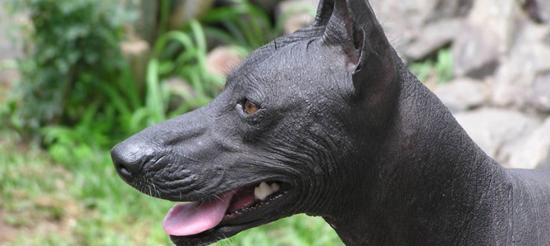Barbara van Asch, Ai-bing Zhang, Mattias C. R. Oskarsson, Cornelya F. C. Klütsch, António Amorim, Peter Savolainen
Source - http://rspb.royalsocietypublishing.org/content/280/1766/20131142

Peruvian dog
Abstract
Dogs were present in pre-Columbian America, presumably brought by early human migrants from Asia. Studies of free-ranging village/street dogs have indicated almost total replacement of these original dogs by European dogs, but the extent to which Arctic, North and South American breeds are descendants of the original population remains to be assessed. Using a comprehensive phylogeographic analysis, we traced the origin of the mitochondrial DNA lineages for Inuit, Eskimo and Greenland dogs, Alaskan Malamute, Chihuahua, xoloitzcuintli and perro sín pelo del Peru, by comparing to extensive samples of East Asian (n = 984) and European dogs (n = 639), and previously published pre-Columbian sequences. Evidence for a pre-Columbian origin was found for all these breeds, except Alaskan Malamute for which results were ambigous. No European influence was indicated for the Arctic breeds Inuit, Eskimo and Greenland dog, and North/South American breeds had at most 30% European female lineages, suggesting marginal replacement by European dogs. Genetic continuity through time was shown by the sharing of a unique haplotype between the Mexican breed Chihuahua and ancient Mexican samples. We also analysed free-ranging dogs, confirming limited pre-Columbian ancestry overall, but also identifying pockets of remaining populations with high proportion of indigenous ancestry, and we provide the first DNA-based evidence that the Carolina dog, a free-ranging population in the USA, may have an ancient Asian origin.